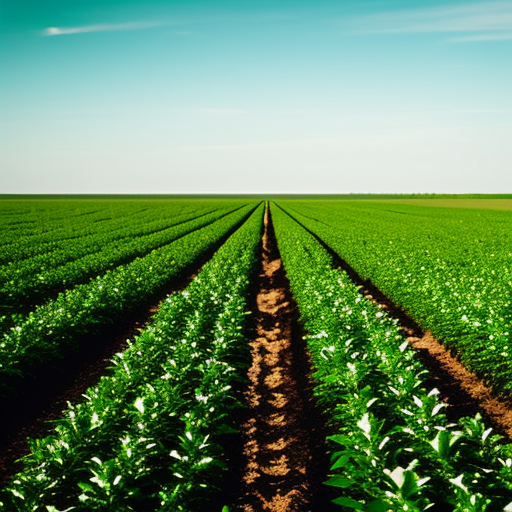Summary:
Vertical farming is a method of growing crops in vertically stacked layers, using controlled environments such as warehouses or skyscrapers. This innovative approach to agriculture offers numerous benefits, including increased crop yield, reduced water usage, and year-round production. Vertical farming also minimizes the need for pesticides and herbicides, reduces transportation costs, and provides opportunities for urban farming. However, there are challenges to overcome, such as high energy requirements, initial setup costs, and the need for specialized knowledge and technology.
Increased Crop Yield:
Vertical farming maximizes the use of space by growing crops in vertically stacked layers. This allows for a higher density of plants compared to traditional farming methods. By utilizing vertical space, farmers can grow more crops in a smaller area, resulting in increased crop yield per square foot.
Reduced Water Usage:
Vertical farming incorporates advanced irrigation systems that optimize water usage. Techniques such as hydroponics and aeroponics allow crops to be grown without soil, using nutrient-rich water solutions or misting systems. These methods significantly reduce water consumption compared to traditional soil-based farming, where a substantial amount of water is lost through evaporation and runoff.
Year-Round Production:
Vertical farming provides the ability to grow crops year-round, regardless of the external climate. By controlling the temperature, humidity, and lighting conditions, farmers can create an ideal environment for plant growth. This eliminates the dependence on seasonal changes and allows for continuous production, ensuring a steady supply of fresh produce throughout the year.
Minimized Use of Pesticides and Herbicides:
In a controlled environment, vertical farms are less susceptible to pests and diseases. The closed system reduces the need for chemical pesticides and herbicides, making vertical farming a more sustainable and environmentally friendly approach to agriculture. This also results in healthier and safer produce for consumers.
Reduced Transportation Costs:
Vertical farms can be located in urban areas, closer to the consumers. This proximity reduces the distance food needs to travel, minimizing transportation costs and carbon emissions associated with long-distance shipping. Additionally, the shorter supply chain allows for fresher produce to reach consumers, as it can be harvested and delivered quickly.
Opportunities for Urban Farming:
Vertical farming offers opportunities for urban areas to become more self-sufficient in food production. By utilizing unused or underutilized spaces such as rooftops or abandoned buildings, cities can establish vertical farms and grow their own fresh produce. This not only promotes local food production but also reduces the reliance on imported food, enhancing food security.
Challenges:
While vertical farming has numerous benefits, there are challenges that need to be addressed. One major challenge is the high energy requirement for maintaining the controlled environment. Artificial lighting, heating, and cooling systems consume significant amounts of energy, which can be costly and have environmental implications.
Initial Setup Costs:
Setting up a vertical farm requires substantial initial investment in infrastructure, equipment, and technology. The cost of constructing a controlled environment, installing irrigation systems, and purchasing specialized lighting and monitoring equipment can be a barrier for many farmers.
Specialized Knowledge and Technology:
Vertical farming requires specialized knowledge and expertise in areas such as hydroponics, aeroponics, and plant physiology. Farmers need to understand the intricacies of maintaining optimal growing conditions and managing nutrient solutions. Additionally, the use of advanced technology, such as sensors and automation systems, is crucial for monitoring and controlling the environment.
In conclusion, vertical farming is an innovative approach to agriculture that offers numerous benefits. It maximizes crop yield, reduces water usage, allows for year-round production, minimizes the need for pesticides, reduces transportation costs, and provides opportunities for urban farming. However, challenges such as high energy requirements, initial setup costs, and the need for specialized knowledge and technology need to be addressed for vertical farming to become more widespread and economically viable.












